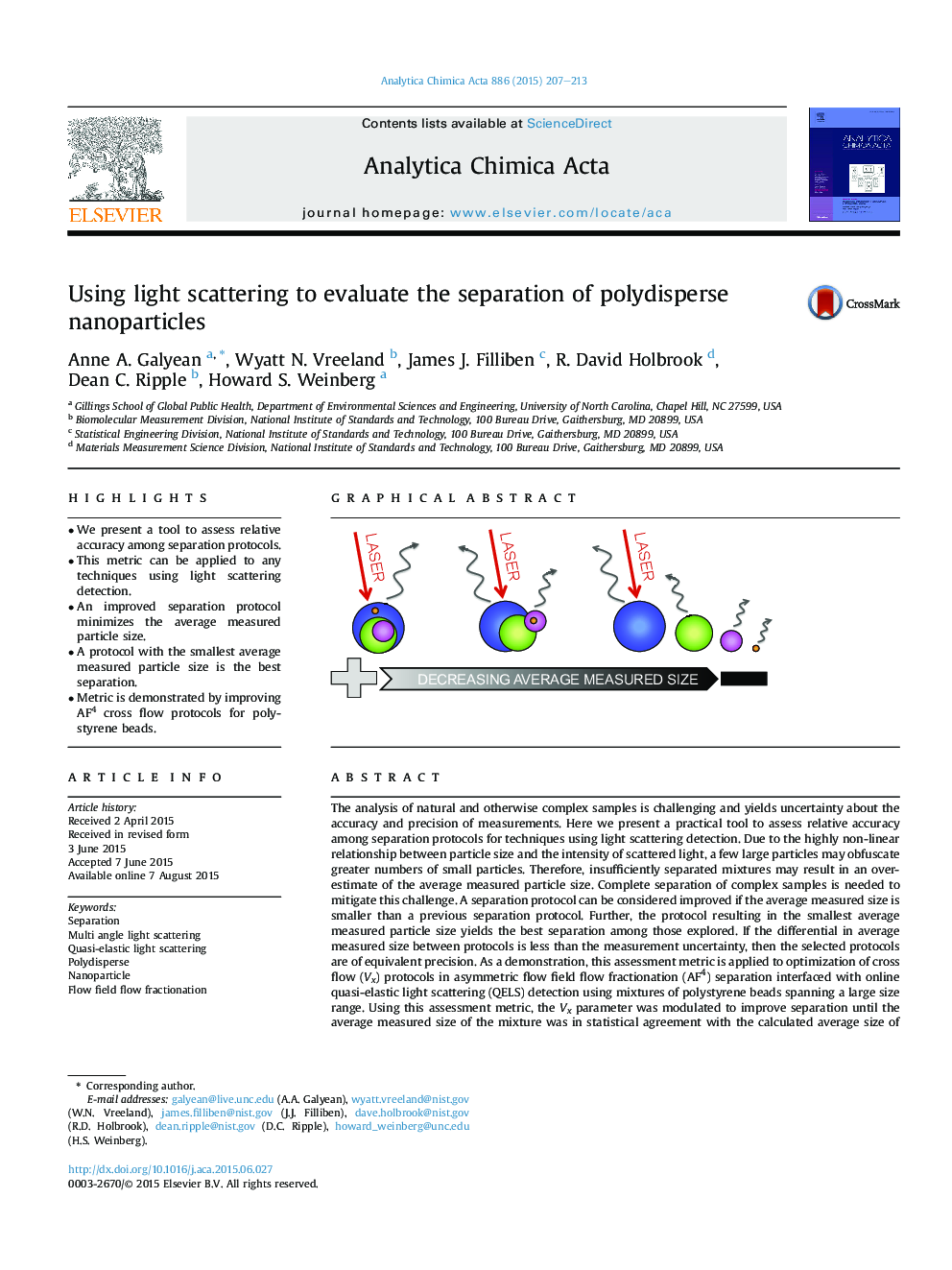| Article ID | Journal | Published Year | Pages | File Type |
|---|---|---|---|---|
| 1163745 | Analytica Chimica Acta | 2015 | 7 Pages |
•We present a tool to assess relative accuracy among separation protocols.•This metric can be applied to any techniques using light scattering detection.•An improved separation protocol minimizes the average measured particle size.•A protocol with the smallest average measured particle size is the best separation.•Metric is demonstrated by improving AF4 cross flow protocols for polystyrene beads.
The analysis of natural and otherwise complex samples is challenging and yields uncertainty about the accuracy and precision of measurements. Here we present a practical tool to assess relative accuracy among separation protocols for techniques using light scattering detection. Due to the highly non-linear relationship between particle size and the intensity of scattered light, a few large particles may obfuscate greater numbers of small particles. Therefore, insufficiently separated mixtures may result in an overestimate of the average measured particle size. Complete separation of complex samples is needed to mitigate this challenge. A separation protocol can be considered improved if the average measured size is smaller than a previous separation protocol. Further, the protocol resulting in the smallest average measured particle size yields the best separation among those explored. If the differential in average measured size between protocols is less than the measurement uncertainty, then the selected protocols are of equivalent precision. As a demonstration, this assessment metric is applied to optimization of cross flow (Vx) protocols in asymmetric flow field flow fractionation (AF4) separation interfaced with online quasi-elastic light scattering (QELS) detection using mixtures of polystyrene beads spanning a large size range. Using this assessment metric, the Vx parameter was modulated to improve separation until the average measured size of the mixture was in statistical agreement with the calculated average size of particles in the mixture. While we demonstrate this metric by improving AF4Vx protocols, it can be applied to any given separation parameters for separation techniques that employ dynamic light scattering detectors.
Graphical abstractFigure optionsDownload full-size imageDownload as PowerPoint slide
